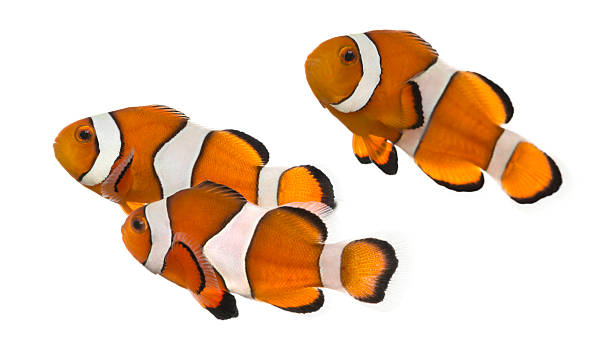The world of clownfish is not only characterized by their iconic orange and white appearance but also boasts a diverse array of species, each with unique colors, patterns, and behaviors. In this exploration of clownfish species diversity, we will delve into the fascinating variations that exist among different types of clownfish, highlighting their distinct characteristics and the allure they bring to the underwater world.
Common Clownfish (Amphiprion ocellaris):
The common clownfish, or Amphiprion ocellaris, is perhaps the most recognized species, popularized by its appearance in animated films. These clownfish typically showcase vibrant orange bodies adorned with black markings, including three distinctive stripes running across their bodies. In the wild, common clownfish are found in association with various sea anemones, forming the symbiotic relationship for which they are renowned.
Percula Clownfish (Amphiprion percula):
Closely related to the common clownfish, the Percula clownfish (Amphiprion percula) exhibits similar physical characteristics but with slight differences in coloration and pattern. Percula clownfish feature brighter orange hues and thicker black margins on their characteristic three white stripes. Their distribution overlaps with the common clownfish, and they, too, form symbiotic relationships with sea anemones.
Tomato Clownfish (Amphiprion frenatus):
The Tomato clownfish (Amphiprion frenatus) stands out with its bold red-orange coloration, resembling the vibrant shade of a ripe tomato. This species is known for its hardiness and adaptability, making it a popular choice among aquarium enthusiasts. In captivity, Tomato clownfish readily accept various types of anemones or suitable substitutes.
Maroon Clownfish (Premnas biaculeatus):
In contrast to the typical orange coloration of many clownfish species, the Maroon clownfish (Premnas biaculeatus) boasts a deep maroon or reddish-brown hue. Known for their larger size compared to other clownfish, Maroon clownfish exhibit a single white stripe and may have variations in color intensity. They are often observed in association with Bubble-tip anemones.
Clark’s Clownfish (Amphiprion clarkii):
Clark’s clownfish (Amphiprion clarkii) encompasses a range of color variations, including yellow, orange, or brown bodies adorned with black markings. This species is known for its adaptability to various environments, and different geographical variants exhibit distinct color patterns. Clark’s clownfish can form symbiotic relationships with a variety of anemones.
Saddleback Clownfish (Amphiprion polymnus):
The Saddleback clownfish (Amphiprion polymnus) is distinguished by its unique color pattern, featuring a bold, dark vertical stripe on its body resembling a saddle. These clownfish exhibit variations in color, with individuals showcasing combinations of orange, brown, and black hues. Saddleback clownfish are often associated with various anemones, and their striking appearance adds a captivating element to aquariums.
Behavioral Variations:
Beyond their diverse colorations, different clownfish species also exhibit variations in behavior. While all clownfish share common traits such as forming symbiotic relationships with sea anemones, specific behaviors, and social structures can differ among species. Understanding these behavioral nuances enhances the appreciation of the intricate lives of clownfish in both natural habitats and aquarium settings.
Conclusion:
The world of clownfish is a tapestry of colors, patterns, and behaviors, showcasing the incredible diversity within this iconic marine group. From the recognizable common clownfish to the bold hues of the Tomato clownfish and the distinctive saddle markings of the Saddleback clownfish, each species brings its unique charm to the underwater landscape. Exploring and appreciating the multitude of clownfish species adds depth to the fascination these charismatic marine creatures evoke in enthusiasts around the world.












